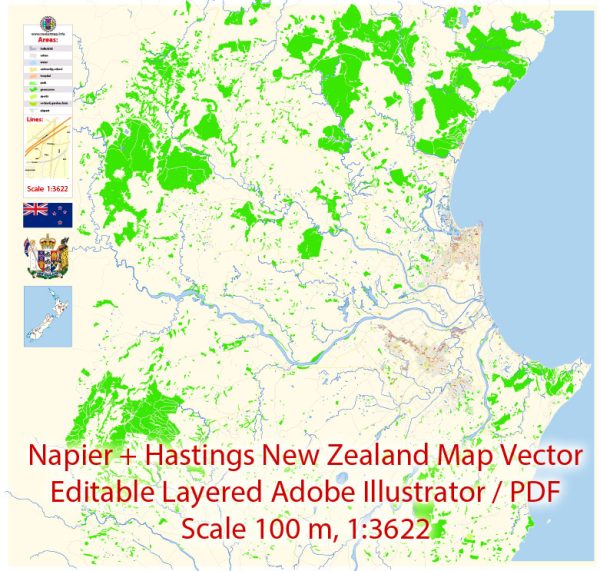Napier is a coastal city located in the Hawke’s Bay region of New Zealand. It is renowned for its unique history of urban development, particularly the distinctive Art Deco architecture that characterizes much of the city. Here’s an overview of the history of urban development in Napier:
- Earthquake of 1931: The defining event in Napier’s urban development history was the Hawke’s Bay earthquake of 1931. This devastating earthquake, measuring 7.8 on the Richter scale, destroyed much of Napier and nearby Hastings. The earthquake resulted in a significant loss of life and caused widespread damage.
- Rebuilding in Art Deco Style: Following the earthquake, the city was rebuilt in the prevailing architectural style of the time, which was Art Deco. The reconstruction efforts took place during the 1930s, and the city’s layout and buildings reflected the Art Deco and Spanish Mission architectural influences. This unique approach to rebuilding has left Napier with a distinct and visually appealing cityscape that attracts visitors from around the world.
- Art Deco Architecture: The Art Deco architecture in Napier is characterized by geometric shapes, bold colors, and decorative elements. Many buildings feature intricate detailing, stepped facades, and decorative motifs that were popular in the Art Deco movement. The preservation of these buildings has become a point of pride for the city, and Napier is often referred to as the “Art Deco Capital of the World.”
- Urban Layout: Napier’s urban layout was reconfigured during the rebuilding process, taking into account modern urban planning principles of the time. The city’s grid pattern is a testament to the efficiency and orderliness that characterized urban planning in the early 20th century.
- Economic Development: Napier’s history also includes economic development, particularly in industries like agriculture and viticulture. The region’s fertile land has made it a significant contributor to New Zealand’s agricultural sector. The growth of these industries has played a role in shaping the city’s economic landscape and contributing to its overall development.
- Cultural Heritage: Beyond the physical structures, Napier’s history is embedded in its cultural heritage. The city celebrates its unique past through events such as the Art Deco Weekend, which attracts people from all over the world to experience the charm and nostalgia of the 1930s.
In summary, Napier’s history of urban development is marked by the transformative rebuilding effort after the 1931 earthquake, resulting in an Art Deco-inspired cityscape that continues to define its identity today. The preservation of this architectural heritage, coupled with economic development and a rich cultural heritage, makes Napier a distinctive and vibrant city in New Zealand.


 Author: Kirill Shrayber, Ph.D.
Author: Kirill Shrayber, Ph.D.